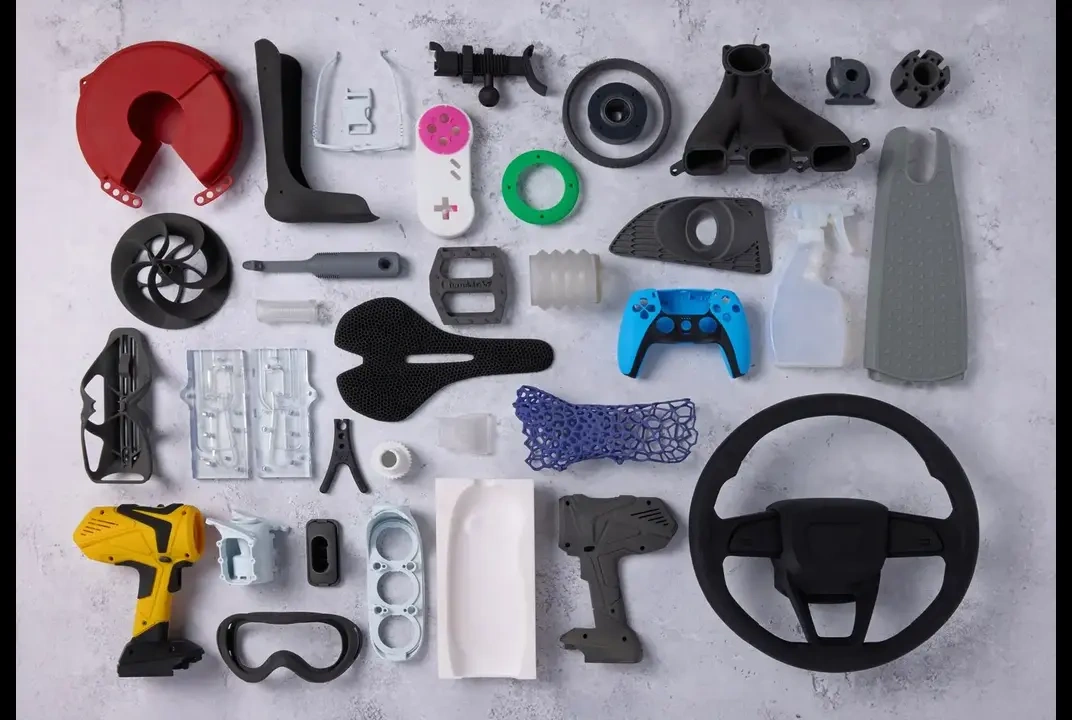
Blog
Materials Used in 3D Printing: A Comprehensive Guide
Materials Used in 3D Printing: A Comprehensive Guide
So, you’ve learned what 3D printing is and how the technology works. Now it’s time to explore one of the most exciting aspects of this field: the materials. In 3D printing, the material you choose is just as important as the design itself. It defines the strength, flexibility, texture, and durability of your final object.
Choosing the right material can be the difference between a functional, durable part and a brittle piece of plastic. This guide will walk you through the most common materials used in 3D printing, from beginner-friendly plastics to engineering-grade composites.
Why Your 3D Printing Material Choice Matters
The materials used in 3D printing are not all created equal. The object you want to print dictates the material you should use. Ask yourself:
- Does this object need to be incredibly strong?
- Does it need to be flexible and rubbery?
- Will it be exposed to high temperatures or sunlight?
- Is it a detailed miniature for display or a functional part for a machine?
The answers to these questions will point you to the perfect material for your project.
The Most Common Materials Used in 3D Printing
Materials in 3D printing are most often categorized by the type of printer they use. The two most popular types for consumers and hobbyists are FDM (Fused Deposition Modeling), which uses spools of plastic filament, and SLA (Stereolithography), which uses liquid resin.
1. Thermoplastics for FDM Printing (Filaments)
FDM is the most common type of 3D printing, and it uses a wide variety of plastic filaments.
PLA (Polylactic Acid)
If you’re a beginner, PLA is your best friend. It’s the most popular material for a reason.
- What it is: A biodegradable thermoplastic made from renewable resources like corn starch or sugar cane.
- Pros:
- Very easy to print.
- Minimal warping (curling) as it cools.
- Doesn’t require a heated print bed.
- Low odor during printing.
- Available in a massive range of colors and styles (glow-in-the-dark, silky, rainbow).
- Cons:
- More brittle than other plastics.
- Low temperature resistance (can deform in a hot car).
- Best For: Prototypes, visual models, toys, and general hobbyist printing.
ABS (Acrylonitrile Butadiene Styrene)
ABS is the same durable plastic that LEGO bricks are made from. It’s a fantastic choice for parts that need to be tough.
- What it is: A strong, impact-resistant petroleum-based thermoplastic.
- Pros:
- High durability and impact resistance.
- Higher temperature resistance than PLA.
- Can be “vapor smoothed” with acetone for a glossy finish.
- Cons:
- More difficult to print; requires a heated bed and often an enclosure.
- Prone to warping.
- Produces strong fumes during printing (requires good ventilation).
- Best For: Functional parts, phone cases, car interior parts, and anything that needs to withstand stress.
PETG (Polyethylene Terephthalate Glycol)
PETG is a great middle-ground between PLA and ABS. It combines the ease of printing of PLA with the strength of ABS.
- What it is: A durable, food-safe polymer. (The “G” stands for “glycol-modified,” which makes it clearer and less brittle than its cousin, PET, used in water bottles).
- Pros:
- Stronger and more durable than PLA.
- Easier to print than ABS.
- Low warping.
- Often food-safe (always check the manufacturer’s data sheet).
- Cons:
- Can be “stringy,” leaving small wisps of plastic on the print.
- More prone to scratching than ABS.
- Best For: Mechanical parts, protective covers, and containers (including those for food, if certified).
TPU (Thermoplastic Polyurethane)
Need something flexible? TPU is the answer. This is the material used to make flexible phone cases and watch bands.
- What it is: A rubber-like thermoplastic.
- Pros:
- Highly flexible and elastic.
- Excellent abrasion and impact resistance.
- Cons:
- Can be very difficult to print, as the flexible filament can jam.
- Requires slow print speeds.
- Best For: Flexible joints, RC car tires, phone cases, vibration dampeners, and wearables.
2. Photopolymer Resins (For SLA/DLP Printing)
Resin printing is a completely different ballgame. It uses a vat of liquid, UV-sensitive resin and a laser or screen to cure it layer by layer.
- What they are: Liquid plastics (photopolymers) that harden when exposed to UV light.
- Pros:
- Incredible Detail: Resin printing captures details far smaller than FDM printing can.
- Smooth Surface Finish: Objects come out looking almost injection-molded, with no visible layer lines.
- Cons:
- Messy Process: Involves handling liquid resin and chemicals (like isopropyl alcohol) for post-processing.
- Post-Curing Required: Prints must be washed and then cured under a UV lamp to achieve full strength.
- Cost: Resin is typically more expensive than filament.
- Best For: Detailed miniatures, jewelry, dental and medical models, and any object where visual appearance is the top priority.
3. Specialty and Composite Materials
This is where things get really interesting. These materials are often a base plastic (like PLA or Nylon) mixed with another material to give it special properties.
- Wood-Filled: PLA mixed with fine wood dust. It looks, feels, and even smells like wood! It’s great for aesthetic prints but is often more brittle.
- Carbon Fiber-Filled: A base plastic (often Nylon or PETG) is reinforced with tiny chopped carbon fibers. This creates parts that are incredibly strong, stiff, and lightweight.
- Metal-Filled: PLA or ABS mixed with fine metal powder (like bronze, copper, or stainless steel). These prints are very heavy and can be polished to look like real metal.
- Nylon: An engineering-grade material known for its toughness, flexibility (when thin), and resistance to chemicals. It’s a top choice for functional parts like gears and living hinges.
How to Choose the Right Material for Your Project
Don’t be overwhelmed! Use this quick checklist to narrow down your choice from the materials we discussed.
| If you need… | Best Material Choice |
| Easy printing & great visuals | PLA |
| Strong, durable, heat-resistant parts | ABS (if your printer is capable) |
| A balance of strength and ease | PETG |
| Flexible, rubbery parts | TPU |
| Extreme detail & smooth finish | Resin |
| Engineering-grade toughness | Nylon or Carbon Fiber Composite |
Final Thoughts
The world of materials used in 3D printing is vast and constantly evolving and this was Materials Used in 3D Printing: A Comprehensive Guide . As a beginner, you can’t go wrong starting with PLA to learn your printer.
But the real power of 3D printing is unlocked when you start experimenting. By matching the right material to your project, you can create objects that are not just models, but durable, functional tools limited only by your imagination.
What’s your favorite material to print with? Are there any you’re excited to try? Let us know in the comments below!










